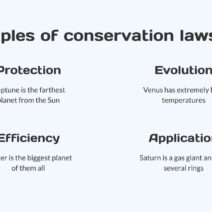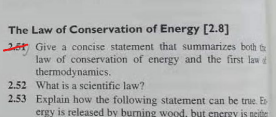The law of conservation of energy is a cornerstone of modern physics, encapsulating the principle that energy cannot be created or destroyed, only transformed from one form to another. This fundamental law has far-reaching implications, influencing scientific thought and technological advancements over centuries. To trace the origins of this foundational law, one must delve into the evolution of scientific understanding from antiquity to the present day.
Early Theories: The Seeds of Energy Conservation
The concept of energy in a scientific sense did not emerge overnight. In ancient times, philosophers pondered the nature of matter and the forces acting upon it. Figures such as Aristotle discussed motion and change, but their ideas lacked the rigor demanded by modern physics. It wasn’t until the Enlightenment that a more systematic approach began to take shape.
In the 17th century, the work of scientists such as Galileo and Newton laid the groundwork for classical mechanics. Galileo’s investigations into projectile motion and Newton’s formulation of the laws of motion and universal gravitation provided crucial insights. Newton’s second law, which delineates the relationship between force, mass, and acceleration, would later intersect significantly with the concept of energy.
The Advent of Mechanical Energy
The transformative period in understanding energy truly arose in the 18th century, marked by the advent of mechanical energy concepts. This era saw the emergence of the kinetic and potential energy definitions, effectively partitioning energy into two fundamental categories. The work of scientists like Gottfried Wilhelm Leibniz and Émilie du Châtelet played a vital role in articulating these categories, linking motion and position systematically.
Leibniz introduced the concept of vis viva, or “living force,” which created a foundation for later formulations of energy. Meanwhile, du Châtelet was instrumental in clarifying the connection between kinetic energy and velocity, paving the way for deeper explorations into the nature of energy. These developments blurred the boundaries between various forms of energy, as they began to be recognized as interchangeable within mechanical systems.
From Heat to Energy: The Birth of Thermodynamics
The Industrial Revolution catalyzed an unprecedented transformation in energy usage and understanding. As steam engines powered factories, the science of heat and its relationship with mechanical work became critical. This period ushered in the field of thermodynamics, which sought to understand energy transformation processes, particularly in relation to heat.
Key figures such as James Prescott Joule and Rudolf Clausius emerged during this epoch, honing the concept of energy conservation. Joule’s experiments on mechanical work and heat led to the formulation of the first law of thermodynamics, a more precise articulation of energy conservation. Clausius further advanced this understanding, providing a clearer definition and implications of energy conservation in thermodynamic systems. During this time, the idea that total energy remains constant, regardless of form, gained traction and was formalized into a cohesive principle.
The 19th Century: A Unifying Principle
The surging advances in chemistry and physics during the 19th century further solidified the law of conservation of energy. Scientists such as Hermann von Helmholtz synthesized principles from mechanics, thermodynamics, and electromagnetism, culminating in a unified view of energy. In 1847, Helmholtz articulated the principle of conservation of force, suggesting that all transformations of energy could be accounted for—further cementing the idea that energy exists in various forms, but remains constant in total.
This period was not merely about theoretical advancements; it also had practical repercussions. The conservation of energy became a guiding principle in engineering and technology, paving the way for innovations in everything from electrical systems to mechanical devices. It allowed for a deeper understanding of energy systems, enabling the design and optimization of machines and systems that are more efficient and sustainable.
Modern Implications and Applications
With energy transitioning towards a central role in combating environmental degradation, the historical trajectory leading to the law of conservation of energy remains relevant. It informs scientific research and technological developments aimed at harnessing energy sustainably and efficiently. Solar, wind, and other renewable energy technologies derive their principles and practices from the foundational ideas established in understanding energy transformation.
Conclusion: A Legacy of Understanding








